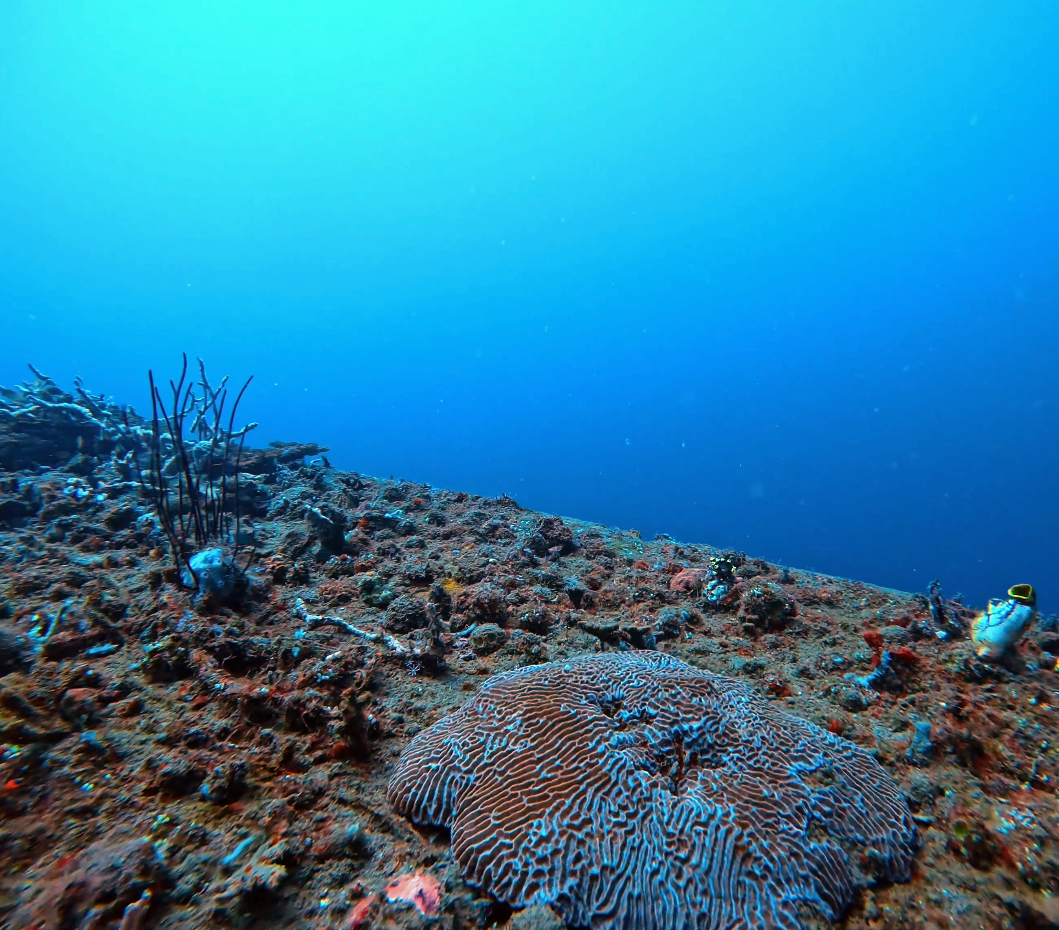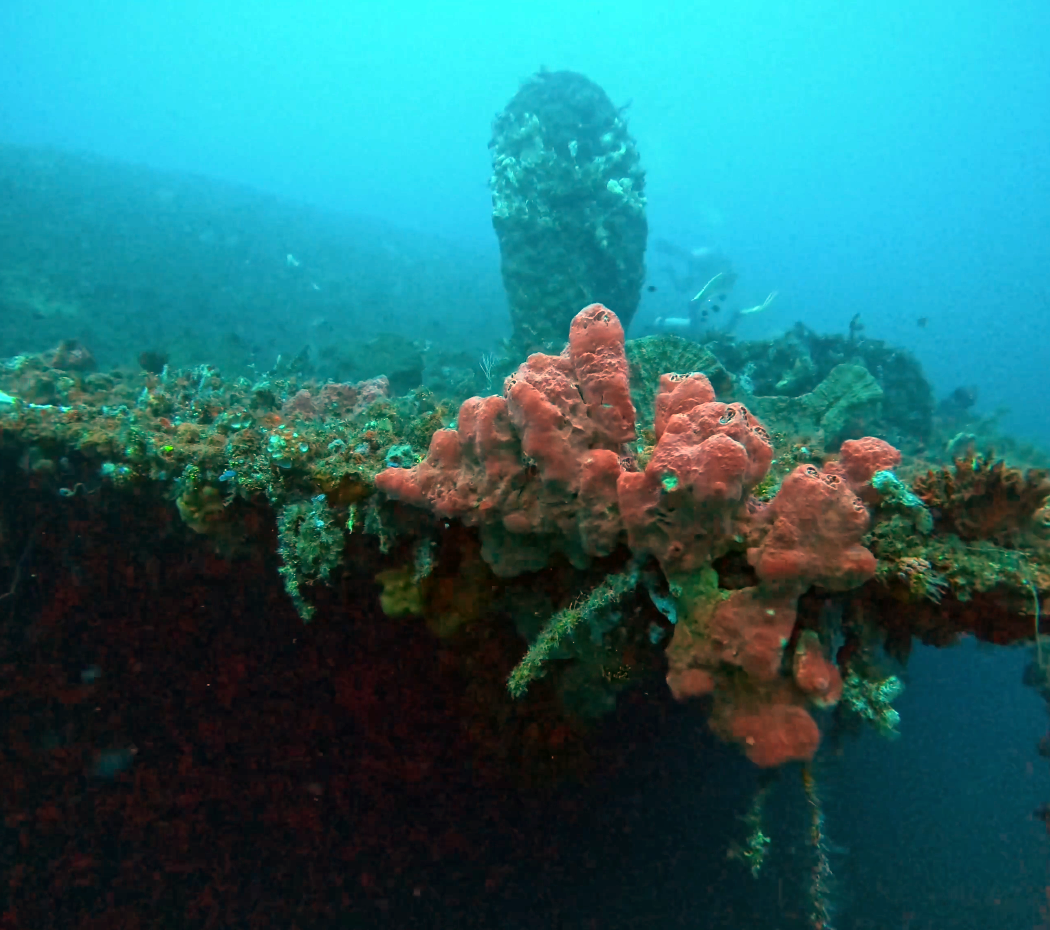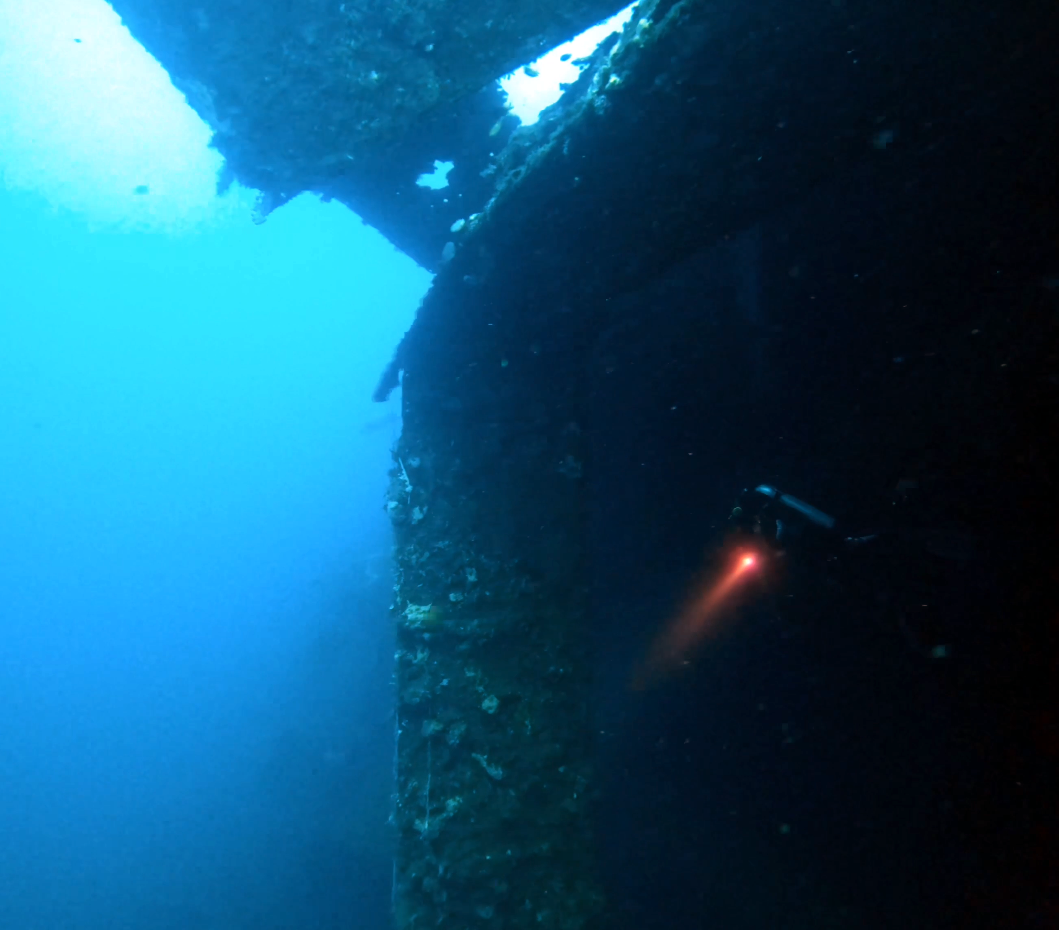Exploring the Mawali Shipwreck in the Lembeh Strait
When divers think of Indonesia’s Lembeh Strait, the first thing that usually comes to mind is the region’s world-famous muck diving — black sand slopes teeming with weird and wonderful critters. But Lembeh has more to offer than just the surreal and strange. Beyond the muck lies a world of stunning coral reefs, vibrant mini walls, and even historic wrecks — and the most known of them all is the Mawali Wreck.
A WWII Relic Beneath the Waves
Named after the nearby village of Mawali, this 90-meter-long Japanese cargo ship sank during World War II after a fire broke out on board in 1943. Today, the wreck rests mostly intact on its port side at a depth ranging from 16 to 30 meters. Over the decades, it has transformed into a thriving artificial reef, now completely encrusted with marine life.
Our Latest Dive at Mawali
Just a few days ago, we had the opportunity to dive this wreck once again — and it did not disappoint. We descended along the buoy line, landing first at the top of the stern, right near the fully intact propeller and rudder. From there, we made our way slowly toward the bow, passing countless nudibranchs, flatworms, and a stunning array of sessile marine life clinging to the structure. The cargo holds are partially open and offer atmospheric glimpses into the ship's interior. As we approached the wheelhouse, we explored a safe and stable swim-through, framed by a beautiful prominent sea fan. Behind it, more open areas of the wreck revealed additional windows into the ship’s past. Reaching the bow, we began our ascent toward the upper parts of the wreck. On our way back along the hull, we encountered even more colorful nudibranchs and flatworms, along with several Peacock Mantis Shrimp hiding in between the corals. Off the side of the ship, a small school of fusiliers fed peacefully in the.
Tips for Diving the Mawali Wreck
Because the wreck lies deeper than many recreational dives, we recommend keeping a close eye on your dive computer and decompression limits. An Advanced Open Water certification or Deep Diving specialty is a must. To maximize your bottom time and make the most of your exploration, Nitrox is highly recommended. If you're not yet certified, you can complete your Nitrox course right at the resort before diving the wreck. It’s a quick and valuable course that will allow you to safely extend your time underwater — especially useful for a dive like this one. Interested in investigating the wreck further? The Mawali is also an ideal site to pursue your Wreck Diver Specialty. With professional guidance, you’ll not only explore new parts of the wreck but also learn about safety protocols and hazard awareness for wreck diving.
Why Mawali Is More Than Just a Wreck
The Mawali Wreck is more than a sunken ship — it’s a living reef, a historical monument, and a vibrant marine habitat all in one. Whether you're into macro photography, marine biology, or historical exploration, this wreck offers something truly special. It’s a reminder that Lembeh’s underwater wonders extend far beyond muck and critters — and are just waiting to be explored.
You can watch the videos shared in our Facebook group through this post: https://www.facebook.com/share/p/1UdqsRH4dV/
Ready to dive into history? Don’t miss the chance to experience the Mawali Wreck on your next trip to Lembeh!
Author: Timo Pisternick (Manager Bastianos Froggies Lembeh)



